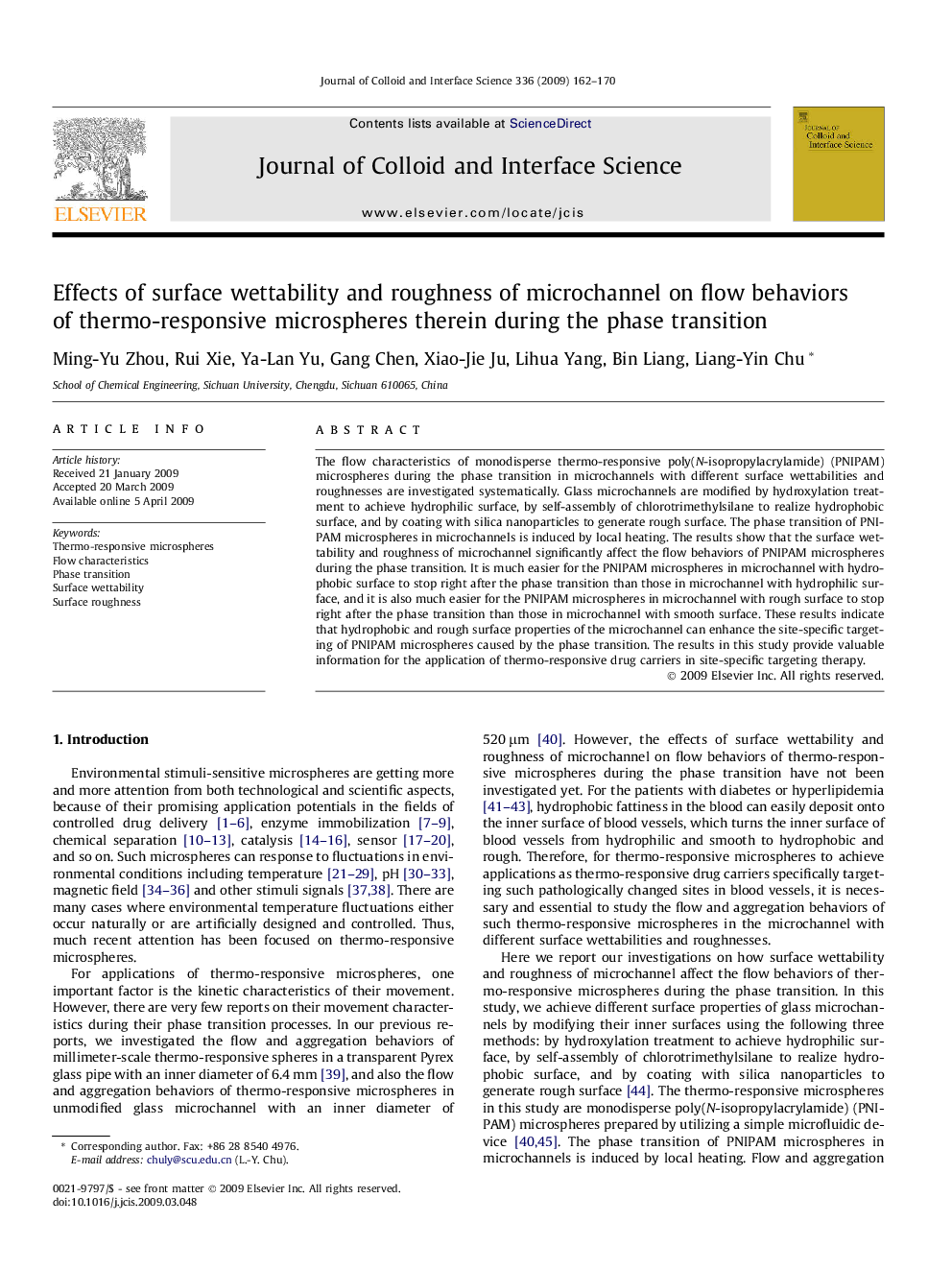| Article ID | Journal | Published Year | Pages | File Type |
|---|---|---|---|---|
| 610353 | Journal of Colloid and Interface Science | 2009 | 9 Pages |
The flow characteristics of monodisperse thermo-responsive poly(N-isopropylacrylamide) (PNIPAM) microspheres during the phase transition in microchannels with different surface wettabilities and roughnesses are investigated systematically. Glass microchannels are modified by hydroxylation treatment to achieve hydrophilic surface, by self-assembly of chlorotrimethylsilane to realize hydrophobic surface, and by coating with silica nanoparticles to generate rough surface. The phase transition of PNIPAM microspheres in microchannels is induced by local heating. The results show that the surface wettability and roughness of microchannel significantly affect the flow behaviors of PNIPAM microspheres during the phase transition. It is much easier for the PNIPAM microspheres in microchannel with hydrophobic surface to stop right after the phase transition than those in microchannel with hydrophilic surface, and it is also much easier for the PNIPAM microspheres in microchannel with rough surface to stop right after the phase transition than those in microchannel with smooth surface. These results indicate that hydrophobic and rough surface properties of the microchannel can enhance the site-specific targeting of PNIPAM microspheres caused by the phase transition. The results in this study provide valuable information for the application of thermo-responsive drug carriers in site-specific targeting therapy.
Graphical abstractHydrophobic or rough inner surface of microchannel, alone or in combination, is favorable for thermo-responsive site-specific targeting of PNIPAM microspheres in microchannels.Figure optionsDownload full-size imageDownload as PowerPoint slide
